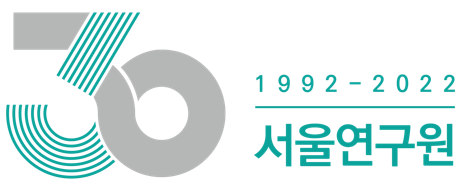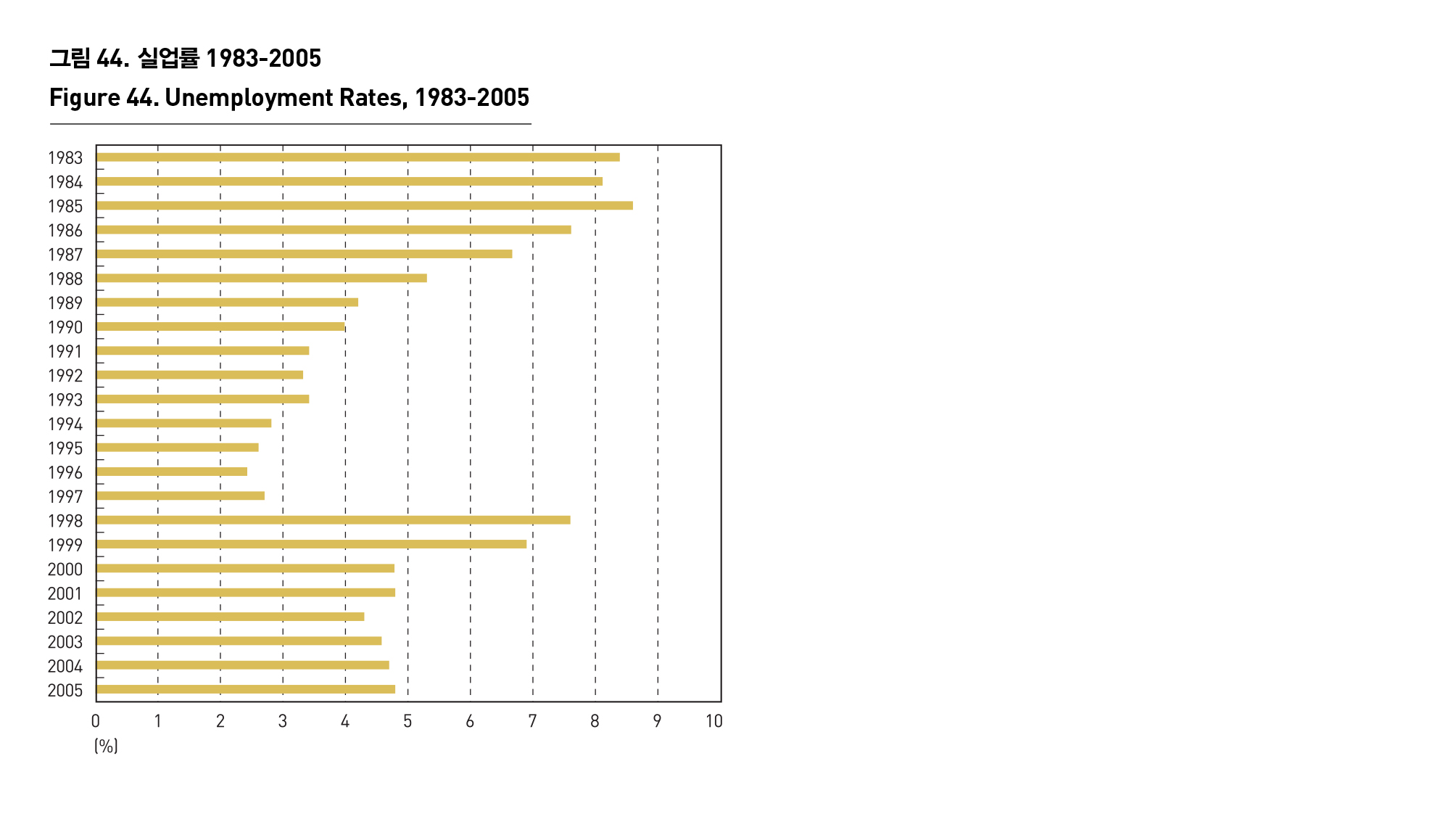-
산업활동과 재정
사업체종사자수
-
사업체종사자수
2005년 현재 서울의 총종사자수는 384만명으로, 지난 1981년 약 238만명으로 기록한 이래로 약 1.6배에 달하는 성장을 보였다. 특히 1997년 외환위기가 도래하기 직전인 1996년 400만명을 기록한 종사자는 1998년 337만명까지 감소하였다가 이후 다소 완만한 증가세를 보이고있다. 이러한 추세는 실업률에 그대로 반영되고 있어, 1996년 완전고용에 달하는 2%대의 실업률이 1998년 8%에 가까운 수준까지 상승하였고, 2000년대에도 4%를 상회하는 실업률을 유지하고 있다.
업종별로는 1차 산업과 2차 산업이 각각 1993년에 16천명, 115만명을 기록한 이래로 현저한 감소세를 보이고 있는 반면, 3차 산업은 같은 기간 동안 급성장을 보여 2005년 현재 전체 종사자의 87.6%에 달하고 있다. 종사자의 공간적 분포 또한 1990년대에 중구, 종로구, 영등포구, 구로구 등을 중심으로 한 종사자의 집중에서 2000년대 이후 강남구, 중구, 서초구, 영등포구, 종로구 등을 중심으로 한 종사자의 집중으로 상당한 변화를 겪었다.
EMPLOYEES
There are 3,840,000 employees in Seoul as of 2005, which is 1.6 times more than 2,380,000 employees in 1981. The number of employees in 1996 stood at 4 million shortly before the 1997 financial crisis, and then dwindled to 3.37 million in 1998, but slowly rose thereafter. Reflecting this trend, the unemployment rate climbed from 2% in 1996 to 8% in 1998, and has hovered over 4% in 2000s.
The primary and secondary industry had 16,000 and 1,150,000 employees in 1993, respectively, and then saw a remarkable drop in the number of employees. On the contrary, workers in the tertiary industry reached 87.6% of the total employees in 2005 over the same period. Most employees worked in Jung-gu, Jongno-gu, Yeongdeungpo-gu and Guro-gu in 1990s. But employees were concentrated in Gangnam-gu, Jung-gu, Seocho-gu, Yeongdeungpo-gu and Jongno-gu in 2000s.
출처 : 통계청, 사업체 기초통계조사 보고서, 2005




